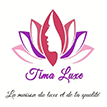Hebrew Ceremony Traditions
In the Hebrew history, marriage ceremonies are a moment for joy and celebration. There are many different traditions that make up jewish weddings but there are a few important instances in any ceremony that will be recognized by most friends. First is the veiling of the bride, known as Bedeken https://wbl.worldbank.org/. This is done prior to the festival and is a symbol of concealing the princess’s experience from the wedding until after they are married. The shroud is often held by her mom, sister, or various shut female family members.

Next is the change of bracelets and commitments which take place under the Chuppah, a canopy that represents the house that the few does establish up. It is at this level that the bridegroom presents his wedding with her necklace. The bridegroom then takes his couple’s palm in his, declaring that they are now officially married under Jewish rules.
Again the chuppah is closed, the pair enters into their greeting which is a period for music, dance, and often times managing serves! The couple will waltz in lines, with males with the groom and women www.jpeoplemeet.com with the wedding. A mechitzah ( divider ) is placed between the two circles. There is also a celebratory waltz called the Hora where the partners is lifted into the air with recliners while holding either a towel or fabric napkin.
After the dancing, the pair will take their first dinner as a married couple up with their parents, grandparents, and the priest. During this meal, Birkat Hamazon ( Grace After Meals ) and the Sheva Brachot are recited. The Sheva Brachot are seven gifts that bring Divine riches on the couple for their relationship.

